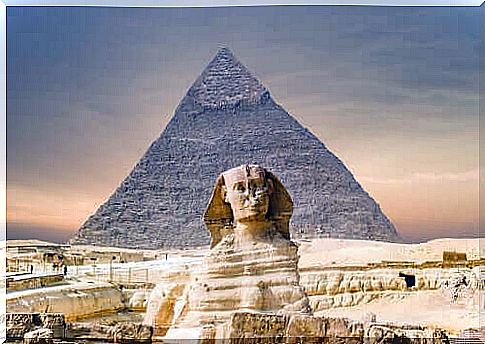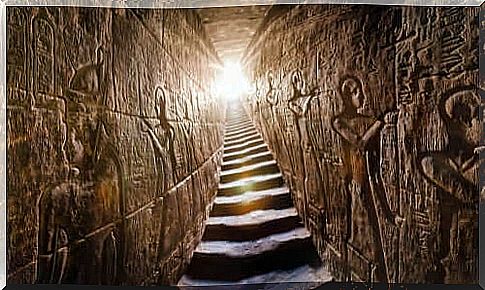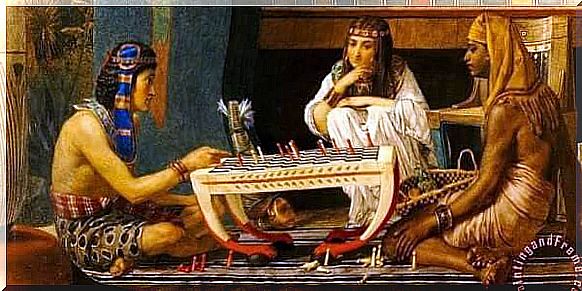Six Interesting Facts About Egyptian Culture

Egyptian culture is one of history’s most admired and mythical. We are talking about what is probably the most prosperous civilization that mankind has ever seen.
It was this civilization that gave rise to great thinkers and incredible scientific, technological and academic breakthroughs.
In fact, after Mesopotamia, it was in Egypt that the written language was first developed: the well-known hieroglyphs.
The word hieroglyph comes from the Greek hiero , which means “holy” and glifo , which means “writing”.
Strangely enough, the Egyptian hieroglyphs have a structure that has never been observed before in the cultural areas of Sumer and Akkad in Mesopotamia.
Even though it was hundreds of years since this image was last used, interest in it has increased.
The explanation is that there has been a renaissance of Egyptian culture , which is largely due to increased globalization and the emergence of social networks.

Six interesting facts about Egyptian culture
1. It was free men who built the pyramids
Contrary to many people’s beliefs , it was probably not slaves who built the pyramids in Egypt. In fact, the pyramid workers worked under three-month contracts.
Their salaries were reasonable and they enjoyed great respect, even if they came from a modest background.
In fact, they were so much admired that those who died during the work were buried in the pyramid complex in Giza.
In this way, their resting place was even closer to the pyramids than to the pharaohs, which was a great honor. The slaves, on the other hand, were usually busy with housework.
2. In ancient Egypt, cats were worshiped
It is no secret that the Egyptians worshiped cats. But people have a hard time understanding the immense reverence they showed them.
The explanation is that according to Egyptian culture , the felines were an embodiment of the sun god Ra, who came to Earth to kill the serpent Adophis, who was the god of chaos.
In time, the deity Ra became subject to Bastet, a female deity who was the patroness of the home and a goddess of war. She turned cats into sacred and inviolable creatures who later became pets.
3. They invented mortar
The Egyptians created this material which is used to join building parts together. They used it to shape the base of the pyramids. Today, however, there are debates about whether the Etruscans also took part in the creation.
The Pyramid of Cheops was the first to be built with mortar around the year 2600 BC. The consequence was that the Egyptians began to develop various types of plaster, including plaster casts, facade plaster and plaster decorations.
4. It was a much more equal society than the Greek and Roman
In ancient Egypt , women enjoyed greater rights than contemporary Greek and Roman women. In fact, Egyptian culture approved of both divorce and inheritance (as did the Celts) and beatings were rejected.
Furthermore, women were allowed to own their own businesses and could engage in several types of work. Of course, most of these were focused on motherhood and healthcare.

5. Left foot forward
If you study a statue built during ancient Egypt, you will notice that it is always the left foot that is foremost.
The explanation is that in Egyptian culture it was believed that it was the left side of the body that gave life, because that is where the heart sits.
In fact, during temple attacks, enemies used to destroy the left legs of the statues. In this way, they symbolically destroyed the “life” of Pharaoh, which meant that Pharaoh was doomed to fall from memory forever.
6. Red was the color of sorrow
Ironically, their lucky color was black. This belief stems from the river bank of the Nile, which was blackened by the clayey soil, which they associated with a good harvest season.
However, red was the color on the inside of the coffins. It represented the ravages of life, the rage of battle, and, in a less symbolic way, the blood of the sacrificial animal, which only upper-class families could afford for their funerals.
Egyptian culture has served as the basis for the development of many cultural (and less cultural) aspects that are part of today’s Western culture.
The medical and scientific innovations of ancient Egyptians still play a central role in all other civilizations, and their astonishing architecture is one of history’s most incredible examples of greatness madness.









